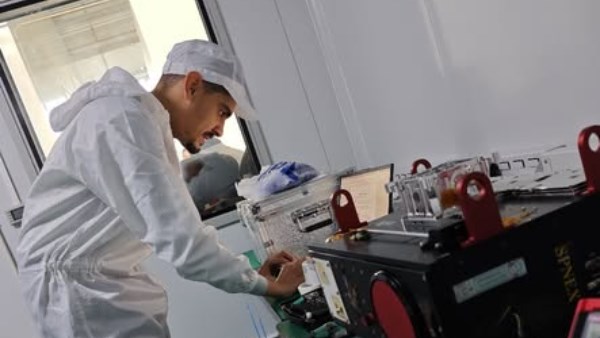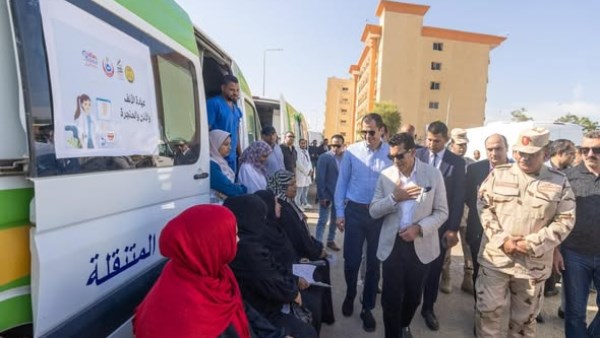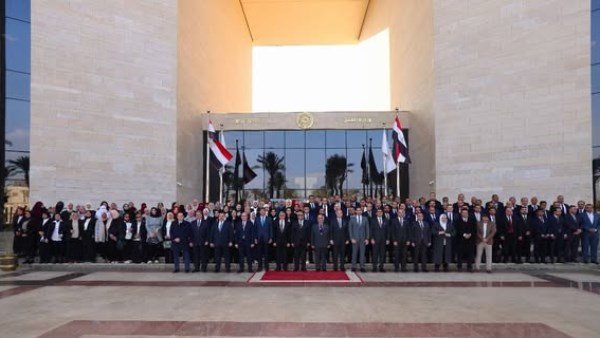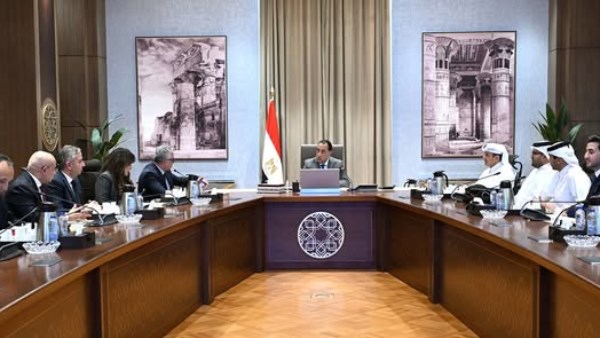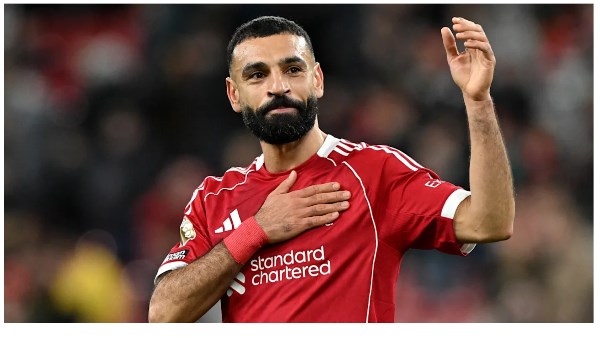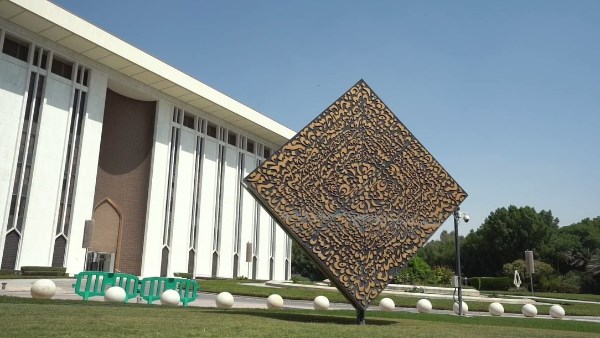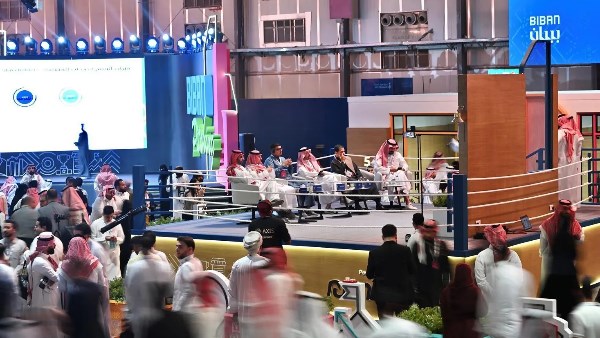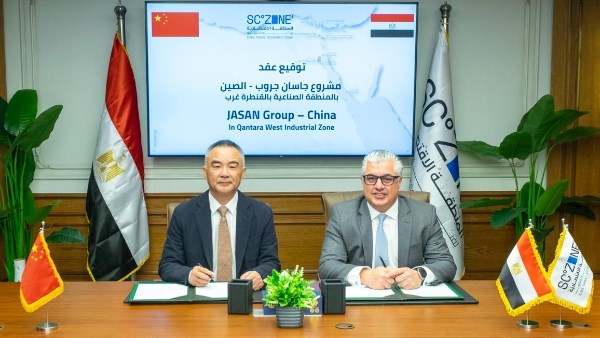
It wasn’t clear the negotiations in Doha would succeed
Israel-Hamas Deal Hinged on Proof-of-Life Evidence، Qatar Sheikh

The breakthrough between Israel and Hamas that will see dozens of hostages and prisoners released from both sides — and more aid flow into Gaza — almost never happened.
Talks over an agreement to free some of the captives held in Gaza began soon after Hamas’s forces stormed into Israel last month and took an estimated 240 hostages back with them، according to US and Qatari officials who briefed reporters as the latest deal was announced.
But it wasn’t clear the negotiations in Doha would succeed.
Fury over the damage wrought by Hamas’s Oct. 7 attack that left 1،200 dead، and an Israeli response that authorities in the Hamas-run Gaza Strip say has killed thousands since، hung over the negotiators. The hurdles included demands to provide proof-of-life details for the hostages and questions over the practicality of Israeli forces remaining in Gaza during a pause in battle.
“There were some very difficult moments، the agreement was nearly sabotaged because of events on the ground،” said Majed Al-Ansari، a spokesperson for Qatar’s ministry of foreign affairs.
Freeing the hostages
As Israel’s closest ally، the US was under pressure to support its historic partner — and find a way to secure the release of nearly a dozen Americans taken in the Hamas offensive. PresidentJoe Bidenflew to Israel less than two weeks after the attack، publicly defending Israel’s right to self-defense but privately pushing for a deal to get hostages freed. He also warily eyed rising frustration in his party over Israel’s counterattacks against Hamas in the densely populated Gaza Strip.
For the Biden team، a sliver of hope emerged when Hamas — a designated terrorist group by the US and European Union — freed an American mother and her daughter on Oct. 20 and Qatar’s leader،Sheikh Tamim bin Hamad Al Thani، got directly involved in the talks.
Hamas’sreleaseof Judith Raanan and her daughter، Natalie، helped give White House officials confidence that negotiations through Doha could yield results، according to a US official who briefed reporters late Tuesday. The Raanans had been taken from Israel’s Kibbutz Nahal Oz، the site of one of the bloodiest massacres in the Hamas attack.
earlier by the Qataris، working with Egypt and a pair of officials that US National Security AdvisorJake Sullivandirected to get involved:Brett McGurk— a veteran diplomat who served as the top American envoy to the global coalition to defeat Islamic State — and Josh Geltzer.
Qatar had been outraged by Hamas’s hostage-taking and thought they should all be freed unconditionally، according to the US official. Hamas، for its part، wanted to free Palestinians held in Israeli jails and secure a break in the fighting، which was quickly devastating Gaza. Hamas’s side was led in Doha byIsmail Haniyeh، the militant group’s former leader، but details also had to go through Yahya Sinwar، its leader in Gaza.
‘Lack of Trust’
“There’s a heightened emotional state، political polarization، and the international situation that’s very chaotic in dealing with the situation،” al-Ansari said. “All this amid a complete lack of trust between both sides and with both sides having to cater to their audiences.”
The situation on the ground didn’t help. Communication systems were in disarray: messages had to be passed from Doha or Cairo into Gaza and back، an official said. And then the reality of trying to negotiate a temporary truce from Qatar، with hostages languishing in Gaza and Israeli troops and tanks in streets recently controlled by Hamas، proved nearly impossible.
“You want to move people within a war zone where infrastructure is all destroyed and there’s severed communication،” al-Ansari continued. “And it’s all happened from Doha، working with the Hamas political office. But also you needed to agree on every specific detail on this.”
A US official concurred، saying the negotiations dealt with everything from exit corridors to surveillance to time frames to total numbers of captives who would be freed.
Qatari Pressure
As the talks progressed، Hamas said they could guarantee the release of 50 hostages in an initial phase. Israel demanded details such as the ages، genders and nationalities of hostages to be freed. But Hamas produced identifying criteria for only about 10 captives. That move، around Nov. 9 according to an American official، wasn’t good enough for Israel and the US.
Biden reiterated demands for more information during a Nov. 12 call with Qatar’s Sheikh Tamim، who made clear he would do everything possible to secure a deal. Soon after that conversation، Hamas produced identifying information for 50 women and children who would be freed.
Buoyed by that progress، Biden called Israeli Prime MinisterBenjamin Netanyahuon Nov. 14 and said he thought it was probably time to move forward with a deal. Netanyahu ultimately agreed. After that call، Israeli minister and former ambassador to the USRon Dermercalled Jake Sullivan with a formula that was approved by Israeli’s war cabinet.
Those conversations convinced the US that they were closing in on a deal، but talks stalled when Hamas went silent for several days، resuming only when Biden traveled to San Francisco for a summit of leaders from the Asia Pacific.
Second Call
Trying to keep things on track، Biden and Tamim spoke again on Nov. 17. The president said the deal had to close، adding that the onus was on Hamas to act. It was only within the last 48 hours that Hamas addressed what the official characterized as fairly significant differences، giving Israel the confidence to move forward، the US official said.
The Israelis initially insisted — and the White House agreed — that Hamas ensure the release of all women and children in this first phase، the US official said. But that didn’t happen. While Hamas will still hold women and children after the first group of captives is freed، the US official expressed optimism there would be a second phase of releases.
As announced early Wednesday، the deal allows for a four-day pause، during which 50 hostages in Gaza will be freed، along with dozens of Palestinian prisoners. Israeli forces will remain in Gaza، but the airspace above the narrow territory is supposed to be free of Israel Defense Forces drones and planes.
The US official said the Biden administration hoped the deal would lead to a cessation in fighting with Hezbollah along the Israeli-Lebanese border، though that wasn’t spelled out in the public announcements from Israel، Qatar or Hamas.
American Child
Most importantly for now، the truce could be extended by a day for every additional group of 10 hostages Hamas frees.
Among the American hostages who meet the criteria for release are a three-year-old girl named Abigail and two women، the US official said. There are 10 Americans still unaccounted for and the US is determined to eventually secure the release of all of them، a US official said.
Much about the agreement could still go awry، but the deal appears to address the interests of both Hamas and Israel، as well as the US، for now.
But while the lull in fighting could be extended، Israel’s government made clear the war isn’t over.
“There is nonsense out there as if، after the pause in fighting، we will stop the war،” Netanyahu said. “We are at war and we will continue it until we achieve all the objectives. We will eliminate Hamas، return all the hostages and guarantee that there will be no element in Gaza that threatens Israel.”





-1120252475029447.jpg)
-920252122624392.jpg)




